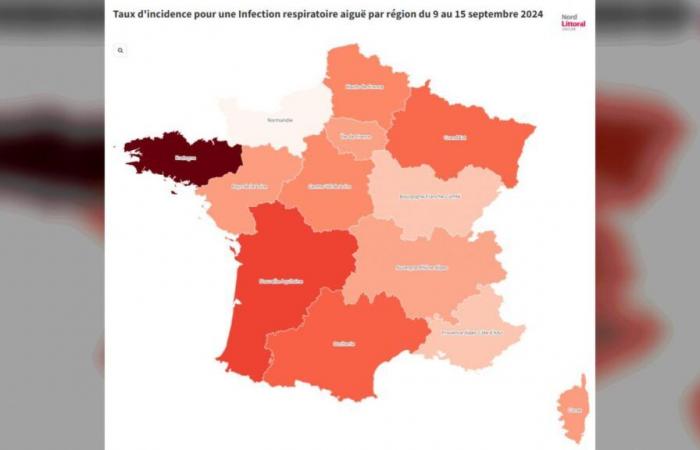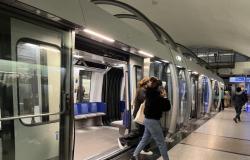
HASAfter the Olympic and Paralympic Games this summer, the Tour de France and the start of the school year, noses are starting to get blocked and we can hear people coughing on public transport.
Beyond the changes in temperature and season, there are the numbers that don’t lie: in mainland France, from September 9 to 15, 2024, the incidence rate of cases of acute respiratory infection (ARI) seen in general practice consultations was estimated at 146 cases per 100,000 inhabitants. As a reminder, an incidence rate of 50 marks a first alert threshold. At 150 cases, we reach the “reinforced alert threshold”.
ARIs are caused by different respiratory viruses such as Covid-19, influenza viruses, as well as other respiratory viruses (RSV, rhinovirus or metapneumovirus).
Increasing in recent weeks
According to the Sentinelles research and monitoring network, which tracks infection indicators, the incidence rate for Covid-19 has been fairly stable in recent weeks, after a rise in cases in June, but there has been an increase in recent weeks in most regions.
Public Health France confirms the increase in syndromic indicators in the city, especially among those under 65: “In terms of wastewater, the increase in the detection of SARS-CoV-2 continued for the third consecutive week.”
The incidence rate is highest in Brittany (271) and New Aquitaine (186) for ARI. It is lowest in Normandy (55), Burgundy-Franche-Comté (101) and Provence-Alpes-Côte-d’Azur (101).
In the Auvergne-Rhône-Alpes region, the incidence rate is 122 per 100,000 inhabitantsFrom June 17 to 23, 2024, it was 150. A year ago, from September 9 to 15, 2023, it was 39.98 in Ain and 46.70 in Haute-Savoie and 42.30 in Savoie.
As a reminder, any insured person can request to benefit from a screening examination or a test, without prior prescription, indicates the Public Service.
The antigen test, the price of which varies in pharmacies, is now covered 70% by health insurance and 30% by the patient’s mutual insurance. Those who do not have mutual insurance must therefore pay the remaining cost.
The rules are the same for PCR tests carried out in a laboratory. For an RT-PCR test, carried out on a nasopharyngeal swab by medical biology laboratories, the reference rate is 41.19 euros.
The sale price of a self-test cannot exceed 3.25 euros.





